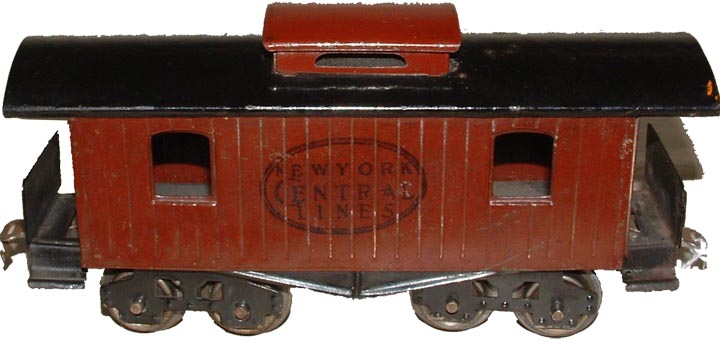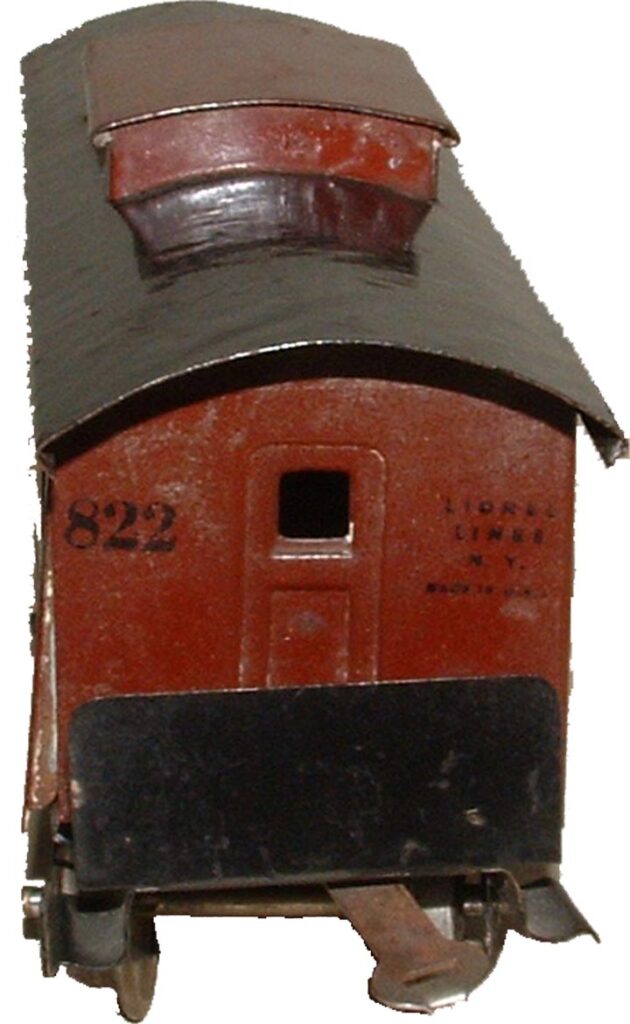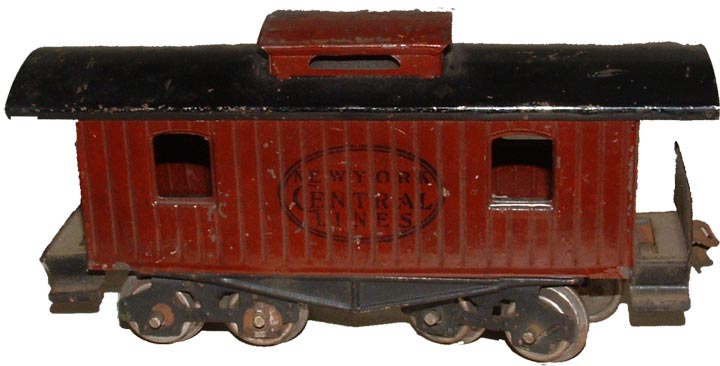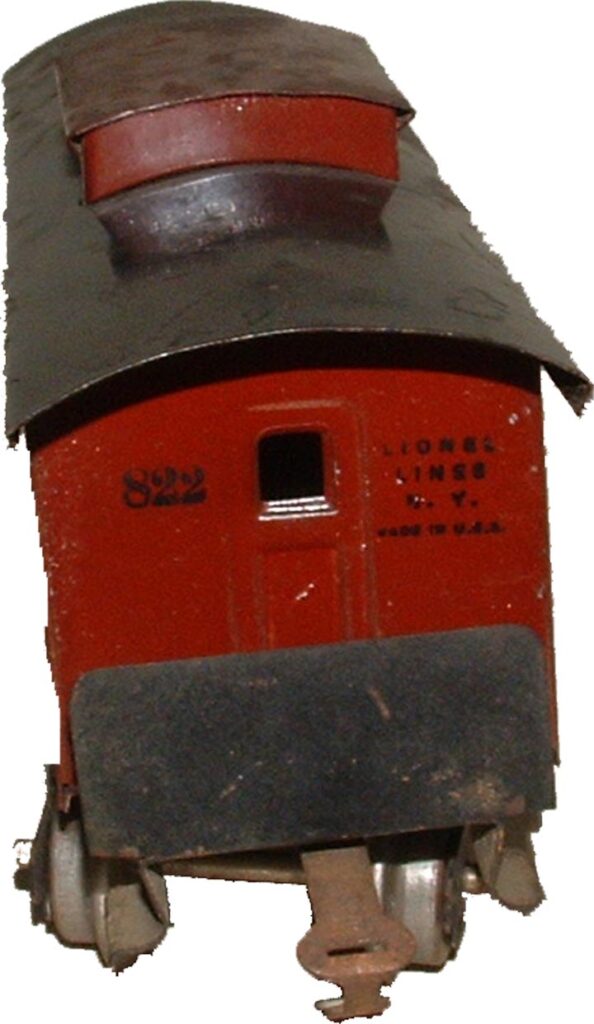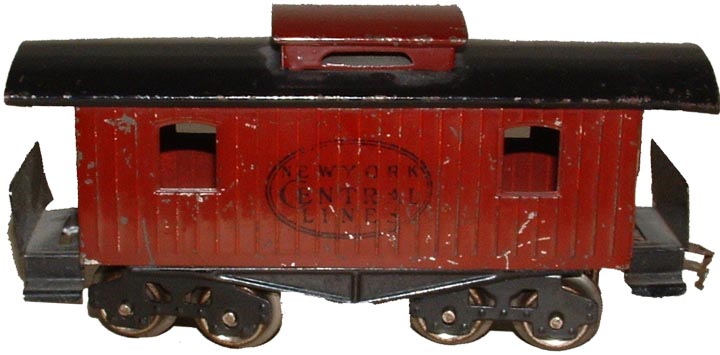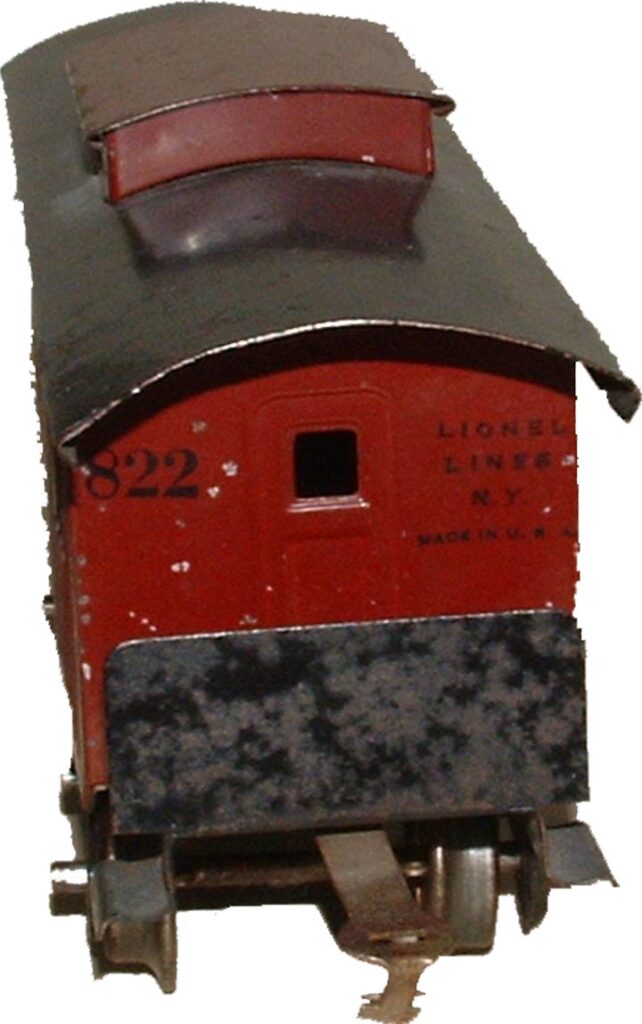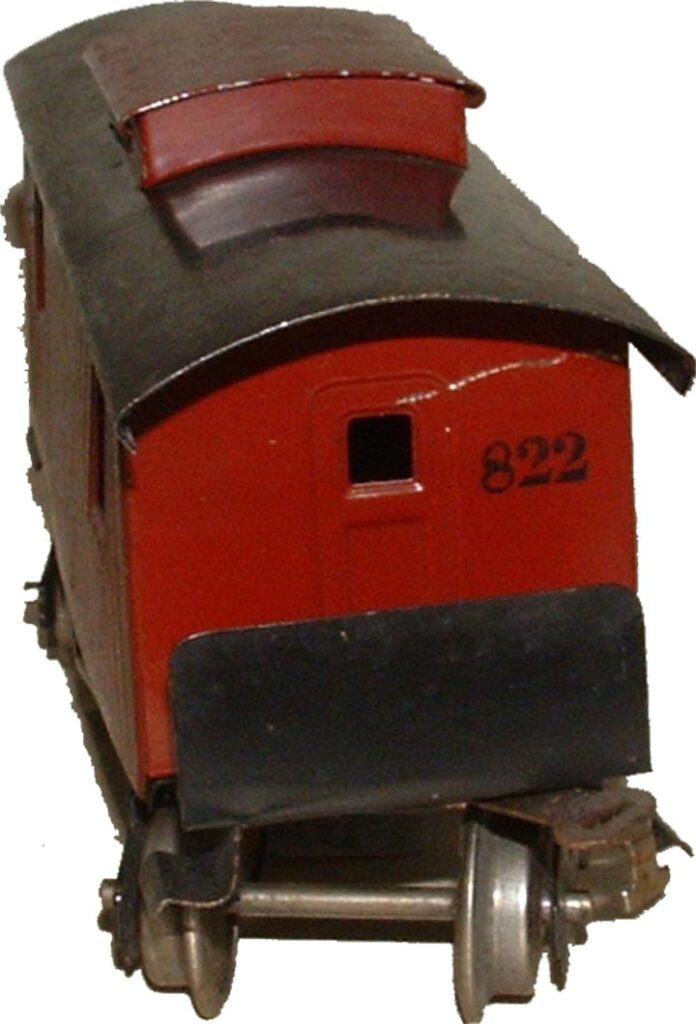Lionel 822 prewar O-gauge cabooses
By Doug Gordon
I have been reading and enjoying the new prewar Lionel book by David Doyle Standard Catalog of Lionel Trains 1900-1942. I have a particular interest in the early period freight cars and noticed that the 822 cabooses were omitted. I’ve written this short piece with photos to help fill in that small gap in David’s excellent book.
Lionel produced both smaller and larger O-gauge freight cars in the early production period 1915-26. The smaller freights have received much attention, but less has been given to the larger ones. One reason may be the greater variety of small freights: boxcar, cattle car, gondola, caboose, and tank car and hopper car in the later years. For several years only the boxcar and caboose were produced in the larger size, with the cattle car appearing toward the end of the era. The larger series cars are not difficult to collect, possibly a reason for less general interest, but for me a good reason to buy them. Most versions of the 822 caboose are not rare and can be obtained at reasonable cost—less than $50 for most versions in good condition, though much more than that for examples in excellent condition.
The 822 caboose has a similar progression of changes in the stamping of the Lionel name to the other early series O-gauge cars, small and large. That timeline has been well described by Richard Vagner and Lou Redman in their Classic Toy Trains articles in the Winter 1989 and Spring 1989 issues. Those articles are a wealth of information about the small O-gauge freights. I recommend them to collectors interested in early period freight cars, small and large. Greenberg’s Guide to Lionel Trains 1901-1942 Volume II: O and OO Gauges also describes the progression from manufacturing lettering to corporation stamping. The other notable changes for the 822 caboose are a change in color from brown to maroon, and a change in the embossing of the ribs, from inward to outward.
The first car shown is the earliest in my small collection. It is brown and the ribs are embossed inward. On the end, the font size of the Lionel lettering is relatively small. The number 822, though, is large.
The second car also has inward embossed ribs, but the brown has maroon mixed with it.
The lettering on the end is similar to that on the first car, but the 822 is notably smaller.
My third car is more clearly maroon. The ribs on the side of the car are embossed outward.
This caboose has a Lionel Lines stamp on the side and a Lionel Corporation stamp on the bottom. The stamp on the side is significantly larger than for the earlier cabooses.
The lettering takes up nearly the whole distance from the edge of the doorway to the edge of the caboose. I have another caboose, unshown, that has similar large lettering but no “Corporation” stamp on the bottom. It appears that larger lettering was used near and during the transition to incorporation. This is the same situation as for the small freight cars.
The fourth car has just the number 822 on the end and the Lionel Corporation stamp on the bottom.
And the last example in my collection has the number 822 at the lower right of each side. Both these later cars have the ribs embossed outward. They are a deeper brighter maroon than the earlier cars.
There are other variations that I do not own. I once saw an 822 caboose with inwardly embossed ribs and a stamp on the bottom reading: “The Lionel Lines/New York / Made in USA.” I haven’t observed the 822 cabooses with any railroad stamping other than the New York Central Lines. In my small collection the oval stamping of that label remained the same throughout the period.
These early 822 cabooses go well with a pair of boxcars behind the larger engines of the early period, such as the 701, 703, 706, 154, and 156, though they weren’t cataloged with the 703 and 156.
Further note on the 801 cabooses with 4390
I had the pleasure of meeting Richard Vagner at York this fall and showing him my 801 cabooses. He helpfully explained details of the construction of those cabooses and argued persuasively that the apparent 4390 was not intentional. Rather, the stamping machinery for the early cars was misaligned so that the 8 crossed an inwardly embossed rib and did not form the left edge of the lettering. This created the apparent 4390 rather than 4890 on the early brown cabooses. The problem was eventually noticed and corrected. I think the correction was done before the change from brown to maroon as I’ve seen a photo of a brown 4890 but haven’t seen later maroon cabooses with 4390. But my knowledge is limited and they may exist.
It does seem odd that Lionel would change only one digit of a car’s number and I don’t know of other cases in the early series. A misalignment that was eventually noticed and corrected explains the puzzle. The 822 cabooses do not have numbers other than the Lionel item number. Richard sent me the photo below, showing the difference.

